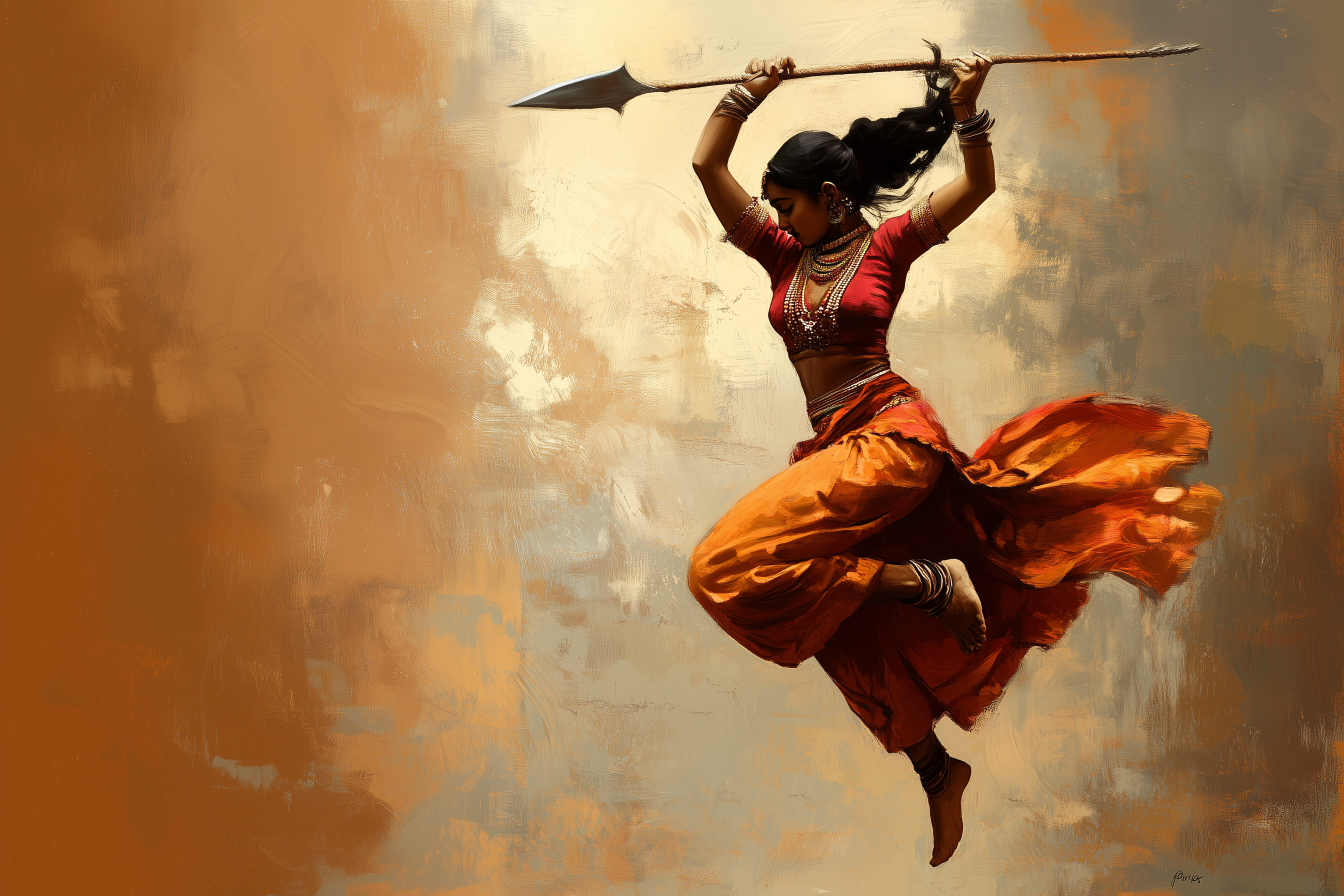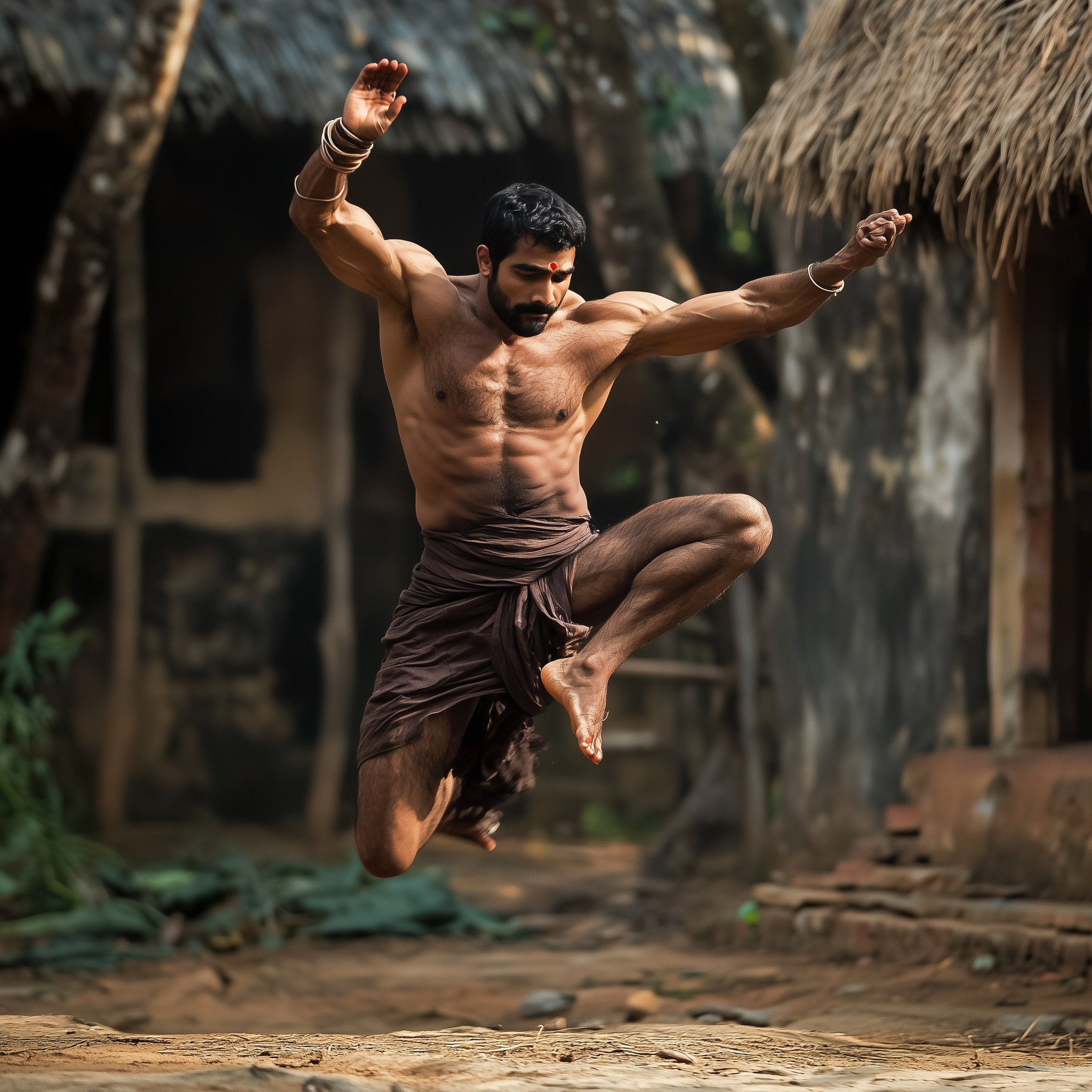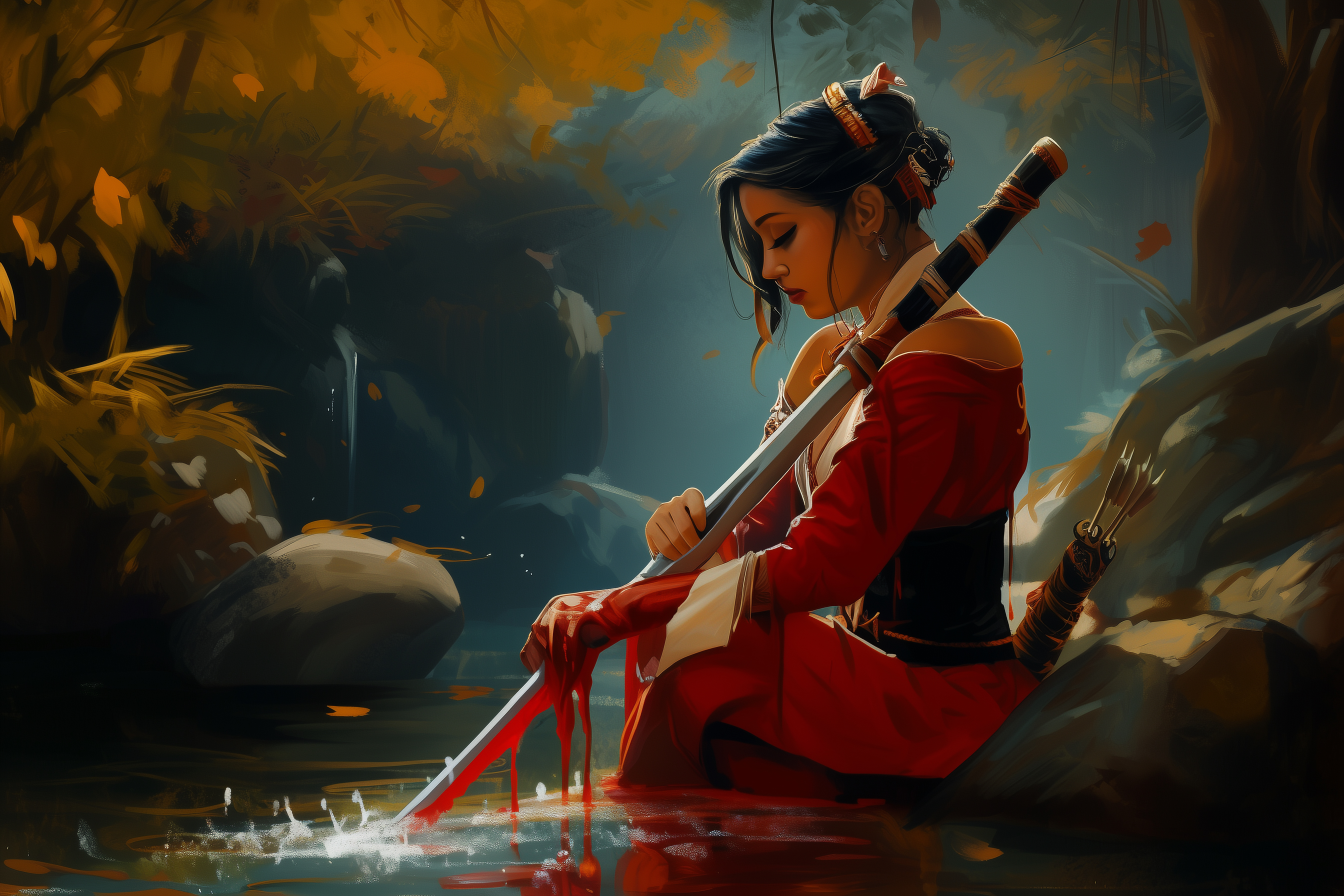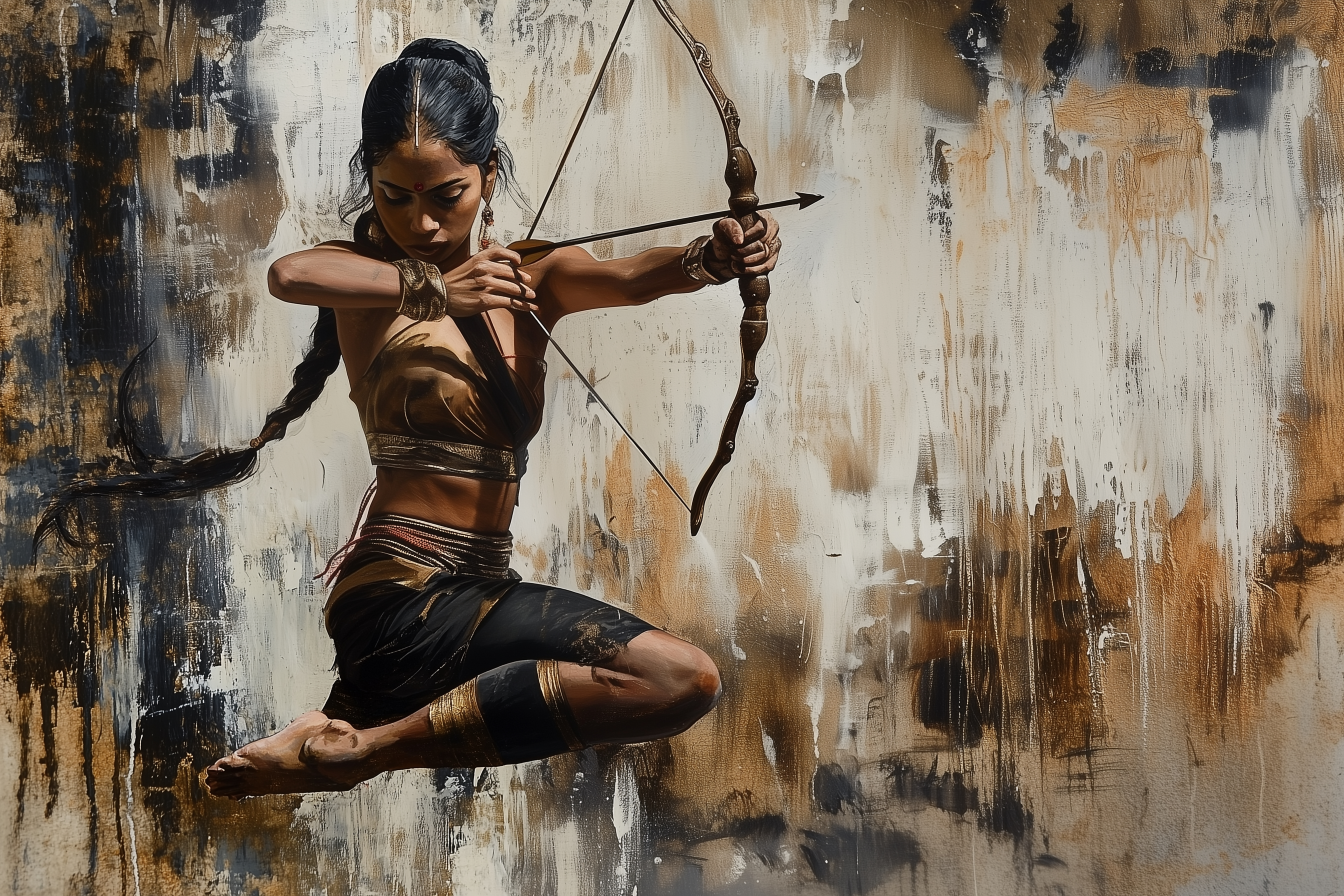

. . .
In Kalaripayattu, animal forms play a significant role in shaping the movements, combat techniques, and philosophy of the martial art. The Garuda (Garudan in Malayalam), inspired by the mythological bird in Hindu epics, holds a special place in the symbolic and practical aspects of Kalaripayattu. Garuda is known as the king of birds and the mount of Lord Vishnu, often depicted with immense power, speed, and the ability to soar into the sky while maintaining focus and precision. These qualities influence the fighting style inspired by Garuda in Kalaripayattu.

The Role of Garudan in Kalaripayattu
Symbolic Representation
Garuda symbolizes agility, focus, strength, and vigilance in Kalaripayattu. Just like Garuda is ever-vigilant and known for his sharp perception, practitioners aim to develop a heightened awareness of their surroundings. The Garudan form in Kalaripayattu instills qualities of alertness, readiness, and precision, both in offensive and defensive techniques.

Combat Movements
Garudan's movements in Kalaripayattu are inspired by the powerful, swift strikes of a bird diving down to catch its prey, as well as the defensive, evasive nature of soaring in the air.
Practitioners adopt dynamic movements that involve:
Sweeping, aerial-like footwork to avoid attacks and shift positions quickly. Swooping hand movements, resembling the wings of Garuda, that are used to deflect or parry strikes.

Strong, downward strikes that emulate Garuda's attack when swooping down on its target, focusing on powerful, precise blows.
Stance and Posture
The Garudan posture (Garuda Vayu) is a balanced, slightly crouched stance that gives the practitioner the agility to leap into action quickly. The stance allows for swift changes in direction and height, enabling the fighter to execute both high and low attacks with equal efficiency.

In this stance, the practitioner’s arms are positioned like wings, ready to strike or block, while the body remains flexible, prepared to shift or leap. Philosophical Influence
Just as Garuda is a loyal, devoted servant of Lord Vishnu, the Garudan form in Kalaripayattu emphasizes discipline and devotion in the martial art practice. It serves as a reminder that martial training requires mental clarity and dedication, much like Garuda's single-minded focus on his mission. Practitioners are taught to remain steadfast, calm, and collected, mirroring

Garuda’s balance between power and grace.
Is There a Specific Garudan Style in Kalaripayattu?
While there isn't an entire specific style solely dedicated to Garuda in Kalaripayattu (unlike Puli Angam or Simha Angam), the Garudan form is one of the several animal-inspired movements integrated into the training process. These animal forms (including Puli Angam - Tiger form, Simha Angam - Lion form, etc.) help practitioners understand different aspects of movement and combat. The Garudan form is primarily seen in:
Meipayattu (body-conditioning exercises): Movements inspired by Garuda help develop balance, agility, and strength. In these exercises, practitioners mimic the bird’s soaring and swooping motions to build flexibility and reaction time.
Weapon-based training: The swift, powerful strikes and evasive maneuvers associated with Garuda are reflected in how practitioners handle shorter weapons like the dagger or how they use their hands in unarmed combat, performing swooping motions for both attack and defense.

Marma-based strikes: The precision and sharpness of Garuda’s attack are also mirrored in the targeted strikes to Marma points (vital points of the body). Practitioners use sudden, precise motions to attack vulnerable spots on the opponent, much like Garuda swiftly dives to catch its prey.
Conclusion
The role of Garudan in Kalaripayattu is more symbolic and functional, inspiring specific movements, stances, and combat techniques rather than constituting an entire style of its own. Practitioners channel the bird's qualities of agility, focus, and strength to enhance their combat skills. Garuda’s influence is primarily seen in stances, striking techniques, and body-conditioning exercises, designed to instill alertness, precision, and control—key aspects of effective martial combat. While it may not be a standalone style like Puli Angam or Simha Angam, Garudan’s influence adds a unique dimension to the rich tradition of Kalaripayattu.
. . .
